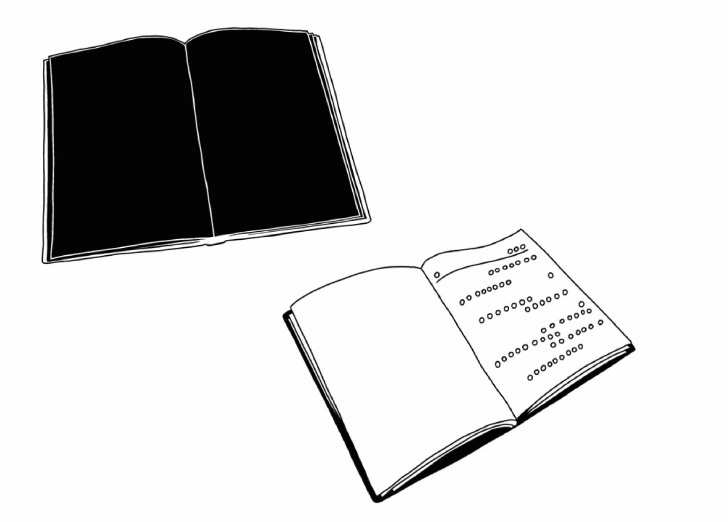
Vom Unendlichen All Und Den We/ten, ash, 18.4 x 28.6 x 2.5 cm
Silenced Voices, lmadaddin Nesimi, Stefana McClure, 2021, Moleskine
notebook, perforated archival ink-jet print, pearls, 25 x 38 x 3 cm
ARTIST STATEMENT by Stefana McClure
This work explores the tension between revelation as direct, individual experience, rooted in an experiential epistemology, and revelation as corporately sanctioned orthodoxy, mediated and enforced by religious institutions through ‘unalterable’ texts.
Examining silenced historical figures from Near Eastern and Western contexts, we have sought to highlight the tension between the individual voices of mystics and orthodox institutions, and the ways these voices of individual revelation, violently muted by institutional power structures, still quietly reverberate in textual forms.
Our subjects are: fourteenth-century Persian poet, lmadaddin Nesimi, first caliph of the Hur0fi sect, whose mystical teachings led to his being skinned alive, executed, and dismembered; and sixteenth-century Italian philosopher-poet, Dominican friar, mathematician, Hermetist, and cosmologist, Giordano Bruno, who resolved to be burned alive rather than recant the truths he felt he had discovered.
The final artwork employs materially additive processes to explore these silenced revelatory voices and their problematised textual legacies. The finished work presents object-relics in the form of altered books. In the first, a fourteenth-century Hur0fi poem has been redacted by drilling into the pages, creating holes to receive pearls that partially obfuscate the Farsi text. The pearls are not tethered, but allowed to nestle on top, offering meaning without confining it. The famously intransigent Bruno is represented by a book of his mystical sonnets that, fittingly, strongly
resisted erasure. In a silent act of (un-)reading and (un-)making, the poems are buried under a fine layer of ash.
RESEARCH COMMENTARY by Stefana McClure, Brendan Ellis Williams, CMR & Seyedehparisa Sajjadi
When power structures are built around purportedly divine, inerrant literary constructs, textualism becomes an expedient weapon. Religious text erected as idol. Revelation from any source beyond the idol and its institutionally sanctioned interpreters silenced to maintain dominion over all confessing adherents. Conformity sold as moral righteousness. No religious arena so starkly testifies to this danger as the Abrahamic.
We sing here of expansion-: expansion versus constriction, openness versus agenda, exploration versus control. As does our obstinate companion, Frate Giordano:
‘… while I rise from my own globe to others, j and penetrate ever further through the eternal field,/ that which others saw from afar, I leave far behind me.’
The apparatuses of control cannot abide the visionary; they can neither contain nor grasp the soul that truly seeks the mysteries of the immeasurable. Ironically, when such apparatuses build their foundations on the sand of textual objects, imagined as infallible and God-breathed, and silence dissenting voices through weaponising those objects, the resonant strains of the persecuted-of direct, unsanctioned revelation-often persist in subversive textual vessels, and, even when buried (literally or figuratively), tend to resurface.
At Nag Hammadi, many such voices, diverging from the newly contrived and political orthodoxy, were buried in clay jars for nearly 1,700 years, resurfacing in 1945 to radically and irrevocably alter our vision of Christian history and theological development. NesTmT was flayed and Bruno burned alive: a horrific price for dissent. The moral cost of violently defending the illusion of a pure, unalterable orthodoxy may be infinitely greater.